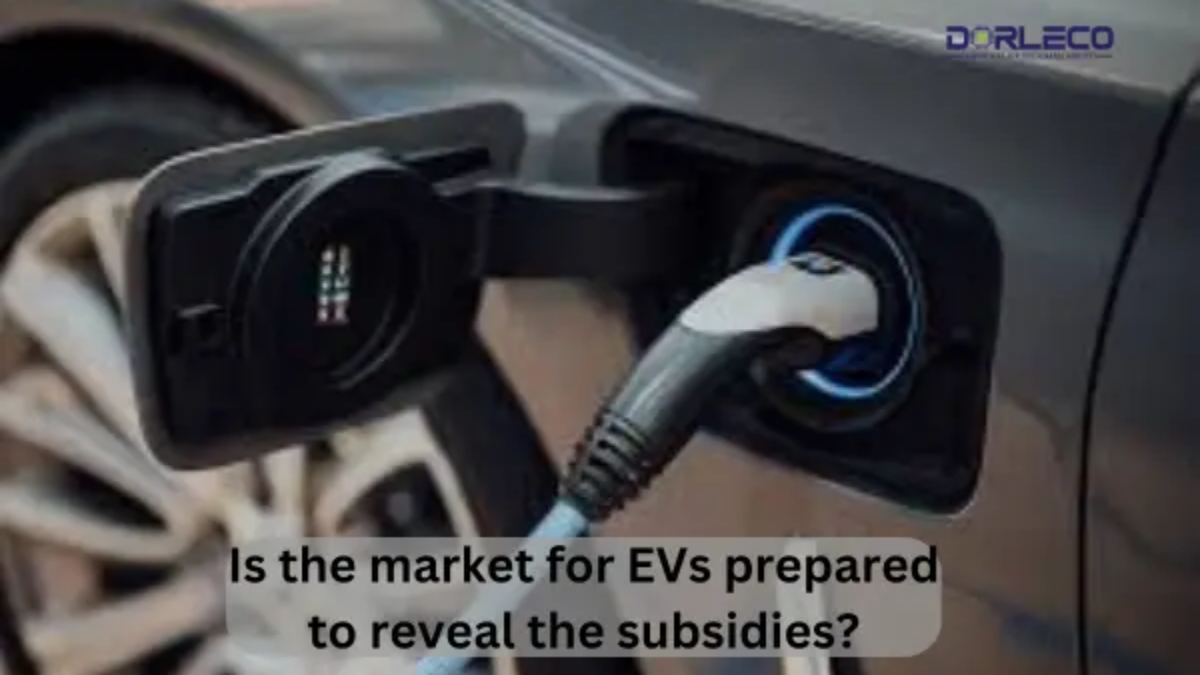EV manufacturer needs to re-evaluate their plans since the removal of EV subsidies may affect their estimates for EV sales and profitability. India’s EV adoption rate might slow since many potential consumers still find the cost a major deterrent.
New Delhi: Government subsidies helped the Original Equipment Manufacturers (OEMs) lower the cost of EVs, which facilitated a more seamless adoption of EVs in India. However, it’s claimed that the recent cutbacks in EV subsidies are slowing the rise in EV sales.
Union Finance Minister Nirmala Sitaram has not indicated that a FAME III (Faster Adoption and Manufacturing of Hybrid and Electric Vehicles) Policy will be included in the interim budget for 2024. Furthermore, according to the revised projection for FY24, the budgetary allocation for FAME has been lowered by 44% to INR 2,671 crore. A revised estimate of INR 4,807.4 crore was applied to the INR 5,172 crore fund that was allotted for FAME in FY 24.
According to auto analysts, the FAME plan was a significant driver of the rising demand for electric vehicles. The car industry’s many stakeholders think that the subsidies should change course.
The elimination of EV subsidies may affect automakers’ profitability and sales expectations for electric vehicle models, so they must now reevaluate their plans. “Sohinder Gill, CEO of Hero Electric Vehicles India and Director General of SMEV, states that the adoption rate of EVs in India may slow down because the cost is still a major deterrent for many potential consumers.
PLI to make up for the EV subsidies?
OEMs are eligible to participate in the Union Ministry of Heavy Industries (MHI) Production Linked Incentive (PLI) Scheme. In contrast to the FAME subsidy that end users receive for purchasing an electric vehicle, it is based on production-based targets.
According to Saket Mehra, Partner at Grant Thornton Bharat, “PLI focuses on strengthening the manufacturing ecosystem for long-term sustainability, while FAME stimulates consumer demand.”
PLI schemes can serve as an investment to lower the cost of electric vehicles and their parts by encouraging domestic (Indian) production as well as research and development. In addition to encouraging technological improvements, the “Made in India” initiative reduces reliance on imports and increases employment opportunities.
Additionally, Nirmala Sitaraman announced a 478% increase in funding for PLI programs for the automotive industry. While it was only INR 604 crore in the previous budget, INR 3,500 crore has been set aside under the PLI in the interim budget for 2024.
However, experts believe that, at least in the short to medium term, the FAME subsidy program and the PLI scheme should coexist.
The FAME subsidy can be partially replaced, but not entirely by the PLI plan. To localize the supply chain and gradually lower prices, a strong EV ecosystem must be established, and this can only be done by promoting manufacturing through PLI.
But in the short- to medium-term, incentives like FAME are crucial to increasing EV adoption. “It could be more effective to take a phased approach where PLI supports industry scaling and FAME addresses market demand,” says Randheer Singh, CEO & Founder of ForeSee Advisors Pvt Ltd and Ex-Director of NITI Aayog in the E-Mobility Mission.
Companies update the cost of cars.
The government announced that subsidies would be applied to ex-factory pricing—that is, the price of a vehicle at the factory gate—rather than ex-showroom prices on February 9, 2024, a few days after the interim budget was released.
In reaction to the intense competition in the EV industry, where businesses are vying for market share by providing greater value, Randheer Singh feels that this news coincides with several companies announcing price reductions.
“Costs inevitably decrease as technology advances and production grows, enabling OEMs to pass these savings on to customers. It might also be an effort to boost demand ahead of or in reaction to cuts to government subsidies, the speaker continued.
Ola Electric reported that after lowering the price of its S1 X+, S1 Air, and S1 Pro by roughly INR 15,00 it saw a notable spike in sales in two days.
When MG Motor revealed a significant price reduction of almost INR 1.4 lakh for its entry-level electric vehicle, the MG Comet, it jumped on the bandwagon last month.
The corporation claims that there were several reasons for the significant work put into the pricing revision. Gaurav Gupta, Deputy MD of MG Motor India, stated in an interview with ETAuto that the efforts were “concerned with material pricing, logistics, commodities, contracts, and efficiencies, these coming together.” Furthermore, we are observing that lithium prices have been trending downward globally.”
Discounts of up to INR 18,000 were also offered by Okaya, an EV manufacturer, and they were good until February 29, 2024.
Additionally, Ather Energy disclosed that a customer discount of up to INR 22,000 is available for every scooter purchased before March 31, 2024, by the FAME II Policy.
Global EV producer Tesla likewise reduced its prices in the previous year. This year’s growth of EVs is expected to be slower. Ford is rumored to renter the Indian market with electric vehicles in the interim.
Range anxiety and the challenge of finding affordable EV finance are the main factors impeding the global adoption of electric vehicles. According to Saket Mehra, policy measures targeted at expanding access to EV finance and enhancing the infrastructure for charging EVs are anticipated to boost the growth of EVs worldwide.
In general, manufacturers’ price reductions are the consequence of strategic decision-making in response to many factors, such as the elimination of EV subsidies and high manufacturing costs. A small number of established automakers, such as Ford, have seized the chance presented by the EV slowdown to resume their market expansion efforts.
Automakers and the public have responded differently to the FAME Policy’s lower budget and lack of an indication for FAME III. Indian auto OEMs may find it difficult to adjust their plans in light of this shift. EV subsidies, as has been noted, are never permanent.

